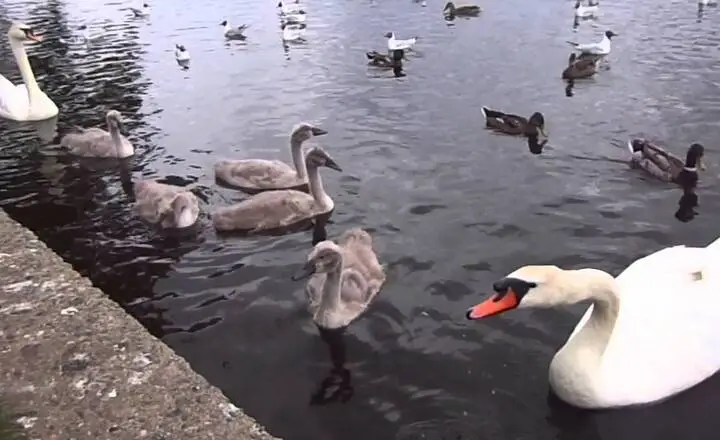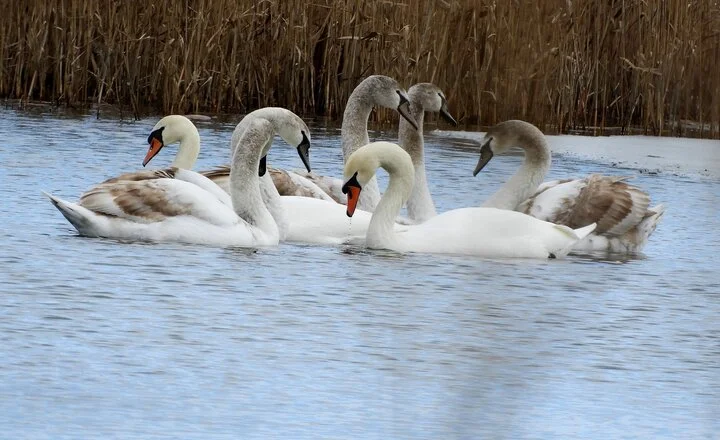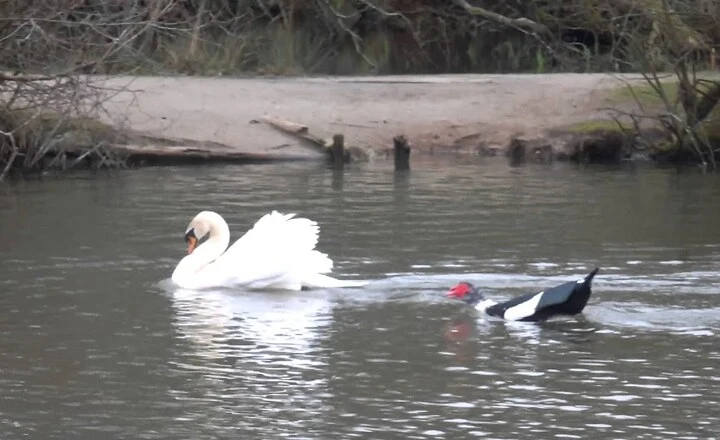In lakes and ponds two majestic creatures reign supreme Duck vs Swan. While both birds share a love for gliding effortlessly across still waters, their differences are as striking as their beauty. Imagine a showdown between these feathered foes, each vying for dominance in the avian kingdom.
Duck is known for its charming quacks and playful antics, faces off against the elegant swan with its regal stature and serene presence.
Duck vs Swan
Ducks and swans are both beautiful waterfowl, but they have distinct differences:
Origin and History
The origin and history of Duck and Swan breeds are fascinating and diverse. Ducks, with hundreds of breeds worldwide, trace their ancestry back several hundred thousand years, with most breeds descending from Wild Mallard Ducks.
Egyptians, Southeast Asians, and Romans were among the first to raise ducks in captivity for their highly nutritious meat and eggs. As the trend of adopting birds as pets grew, ducks also became popular companions despite the challenges of raising them.
Swans have a less documented history compared to ducks but are believed to have lived in the wild for several thousand years before domestication began.
While swans are less common and not as beloved as ducks, they started being raised by people seeking aquatic bird companions similar to ducks.
The domestication of swans followed a similar trajectory as that of ducks, with an increasing interest in keeping them as pets alongside other animals.
Appearance
Swans, Geese, and Ducks may appear similar at first glance, there are distinct differences that set them apart.
Ducks typically have stout bodies, shorter necks, bluish-grey legs, and webbed feet. Swans are larger and heavier with streamlined bodies, graceful elongated curved necks, blackish-grey legs, and bigger webbed feet.
The key difference between the two is the size and structure of their necks – Swans have longer and more elegant necks compared to Ducks.

Another distinguishing factor between Swans and Ducks is the size difference between males and females.
Males are typically larger and heavier than females. This characteristic holds true for both Swans and Ducks.
With their similarities in appearance, these subtle differences help bird enthusiasts easily identify whether they are observing a Swan or a Duck in their natural habitat.
Habitat
They may share some similarities in their habitat preferences as aquatic birds, they do have distinct differences in their behaviors and habits.
Swans are known for nesting on islands, reed beds, and dense vegetation close to bodies of water, while Ducks tend to make their homes in wetlands near rivers, ponds, lakes, and streams.
Despite both belonging to the same family of waterfowl both can swim and go under water, these slight variations in habitat choices reflect their unique evolutionary adaptations and ecological niches.
The cost comparison between domestic swans and ducks may be influenced by factors such as rarity, size, and maintenance requirements.
Swans are often considered more exotic and elegant birds compared to ducks, which could contribute to their higher price tag.
Both species play important roles in maintaining the health of aquatic ecosystems and provide valuable contributions to biodiversity through their interactions with various plant and animal species in their respective habitats.
Diet
Their diet preferences do exhibit some differences. Wild Ducks tend to consume a variety of grains, grasses, aquatic plants, and invertebrates in their natural habitat during winter.
Domestic Ducks typically feed on beetles, flies, ants, moths, oats, rice, bird seeds, frozen peas, cracked corns, lettuce, grapes, and various fruits and vegetables like zucchini and broccoli.

This distinction highlights how the environment can influence the dietary choices of these birds. Wild Swans predominantly feed on aquatic vegetation, small fishes, frogs, and worms in their natural surroundings.
Swans primarily consume grains such as wheat, vegetable matter like potatoes and lettuce, grasses, water plants, insects, and mollusks.
It is interesting to note that while Ducks show a preference for aquatic animals when necessary due to food scarcity of grasses or aquatic plants; Swans prioritize grasses and aquatic plants as their primary source of nutrition.
Temperament
Swans are often less preferred over ducks due to their temperament, as they can be more aggressive and prone to attacking humans, especially during nesting season.
They are known for their hostile behavior towards both humans and other swans, making them less desirable for those seeking a more peaceful interaction with birds.
This aggressiveness can make swans less appealing as pets or companions compared to the more sociable and friendly nature of ducks.

Ducks are generally seen as more approachable and sociable birds, forming close bonds with fellow birds and even humans quite easily.
Their unpredictable behavior may add an element of excitement, but their ability to quickly establish connections with others makes them popular choices for bird enthusiasts.
The contrasting temperaments of swans and ducks play a significant role in why ducks are often preferred over swans in various settings, such as parks or ponds where interactions with these birds occur frequently.
Lifespan
The lifespan of ducks and swans can vary depending on their environment and species within the Anatidae family. Ducks typically have a lifespan of around 10 years, both in the wild and in captivity.
Some species of ducks may live longer or shorter lives based on factors such as predation, habitat quality, and availability of food. Swans generally have longer lifespans compared to ducks. Swans can survive up to 12 years in captivity, but they have the potential to live up to 30 years in the wild.
This longevity can be attributed to their larger size, graceful nature, and ability to adapt well to various habitats.
Use
Swans are typically not consumed as table fare due to their protected status in many countries and the difficulty in hunting them because of their bulletproof feathers.
They are often raised as pets or kept for ornamental purposes. While eating Swan eggs is not a common practice, there are some regions where one or two Swans may be raised specifically for their eggs, which are said to be delicious when stuffed with salad.
Ducks are more commonly raised for both meat and eggs, making them a popular choice for consumption. Ducks can also be kept as pets, but they are primarily valued for their culinary uses.
Their versatility in cooking makes them a preferred option for those looking to incorporate poultry into their diet.
Conclusion
Both ducks and swans are fascinating waterfowl with unique characteristics and behaviors. While ducks are known for their wide variety of species and adaptability to different environments, swans are revered for their gracefulness and elegance.
With their differences both plays important roles in maintaining ecosystem balance and enriching our natural surroundings. Whether you prefer the playful antics of ducks or the majestic presence of swans, there is no denying the beauty and significance of these avian creatures.
FAQs
Is a duck a bird?
A duck is indeed a bird. Ducks belong to the avian family and are classified as waterfowl. They have feathers, lay eggs, and possess wings for flight.
Can a swan fly?
Swans are capable of flying. Swans are large birds with powerful wings that allow them to take flight and soar through the sky.
Does a swan lay eggs?
Female swans known as pens, lay between 4 to 10 eggs in a nest made of twigs and feathers. Swans are known for their strong parental instincts and will fiercely protect their eggs until they hatch.
